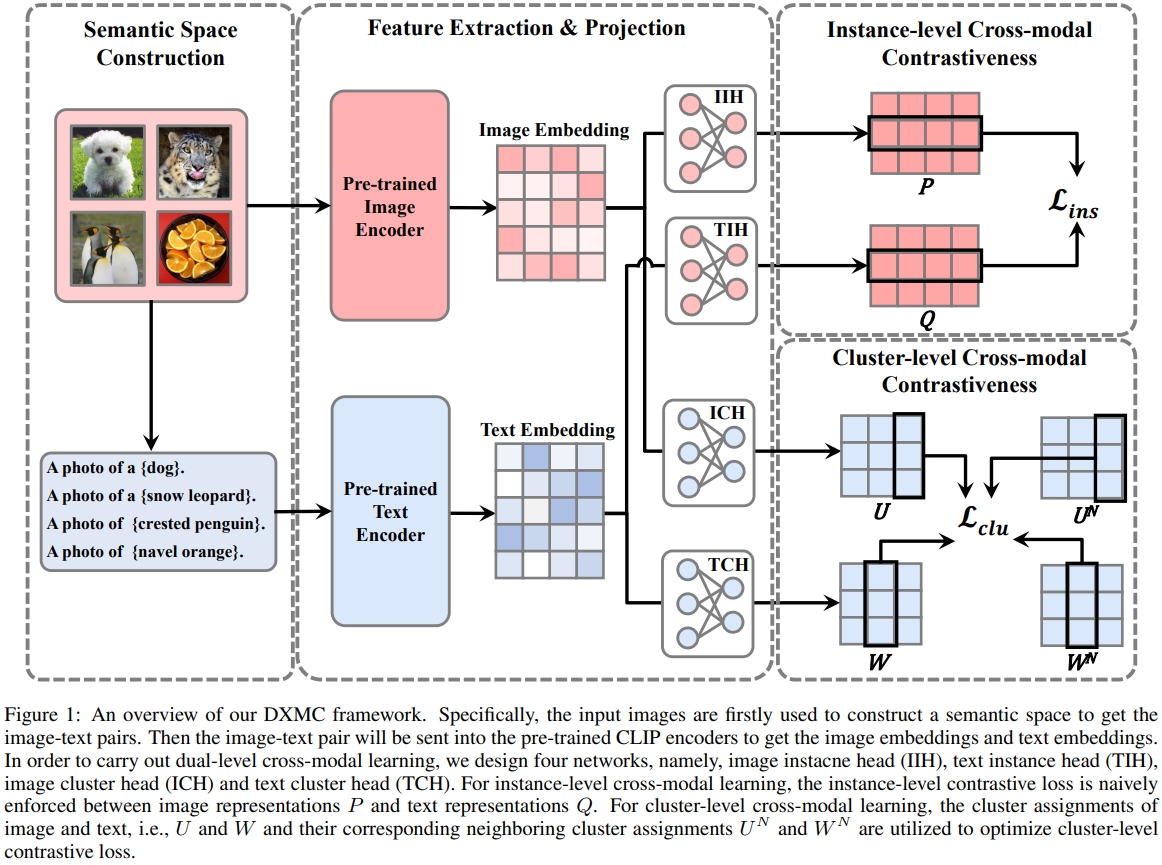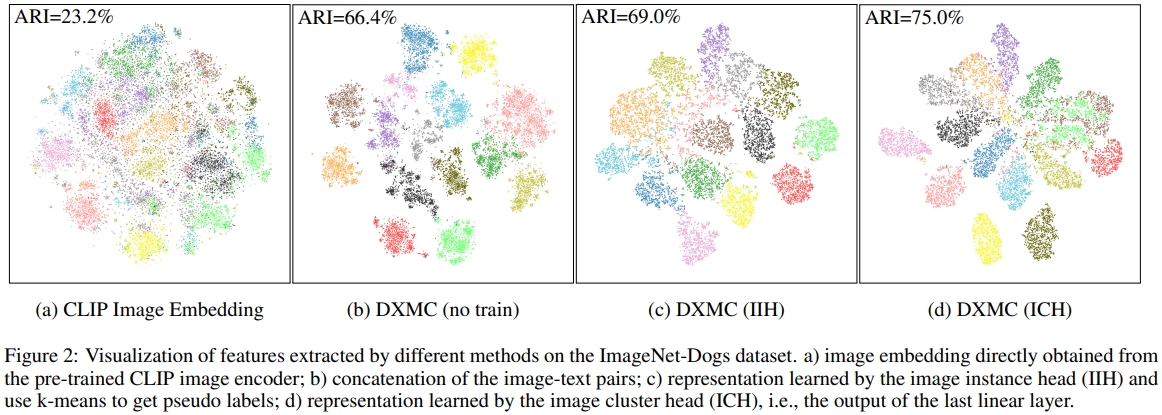This is the offical implementation of the paper entitled “Dual-level Cross-modal Contrastive Clustering” .
- pytorch>=2.0.1
- torchvision>=0.15.2
- munkres>=1.1.4
- scikit-learn>=1.2.2
- clip>=1.0
- timm>=0.9.2
- faiss-gpu>=1.7.4
Our method is built upon TAC . Similarly, we have divided the various steps of our DXMC method into separate .py files.. The following is a step-by-step tutorial. Please note that the intermediate results will be saved to the ./data folder.
To begin, we will compute the image embeddings using the CLIP model by executing:
python image_embedding.py
Next, we will generate the embeddings of WordNet nouns (located in the ./data folder) for constructing the text space by executing:
python text_embedding.py
In this part, our objective is to identify discriminative nouns that describe the semantic centers of images. Inspired by the zero-shot classification approach of CLIP, we classify all nouns into
python filter_nouns.py
The chosen nouns form the text space tailored to the input images. Subsequently, we extract nouns for each image to calculate its corresponding representation in the text modality by running:
python retrieve_text.py
Upon completing the Semantic Space Construction phase, we establish an exceptionally straightforward baseline by employing
python concat_kmeans.py
It is important to highlight that this approach necessitates no supplementary training or adjustments to CLIP. Nevertheless, it has the potential to notably enhance clustering performance when contrasted with directly employing
To enhance consistent learning between image and text representations and ultimately refine clustering performance, we train additional cluster heads by executing:
python train_head_ours.py
If you want to see some TSNE figures, you can firstly save the checkpoint by yourself and then execute:
python eval_head.py
CIFAR-10, CIFAR-20, STL-10 will be automatically downloaded by Pytorch. ImageNet-10 and ImageNet-dogs are subsets of the ImageNet dataset, with class indices provided here.
@misc{zhang2024duallevelcrossmodalcontrastiveclustering,
title={Dual-Level Cross-Modal Contrastive Clustering},
author={Haixin Zhang and Yongjun Li and Dong Huang},
year={2024},
eprint={2409.04561},
archivePrefix={arXiv},
primaryClass={cs.CV},
url={https://arxiv.org/abs/2409.04561},
}


